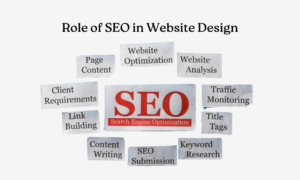I’ve seen it happen too many times—business owners invest in their digital presence, yet struggle to retain visitors. If people land on your platform but leave within seconds, the experience may be the culprit.
Outdated layouts, slow performance, and frustrating navigation don’t just annoy users—they impact conversions, brand reputation, and search rankings. So how do you know when it’s time for an upgrade? Let’s break down seven clear signs that a refresh is overdue.
Quick Glance: 7 Signs You Need an Update
- People leave too quickly (High Bounce Rate)
- Your layout looks outdated
- It’s frustrating on smaller screens
- Slow performance drives users away
- Finding information is difficult
- Conversions are lower than expected
- It’s not accessible to all users
Does this sound familiar? Let’s explore each in more detail.
1. Visitors Arrive… and Then They Leave

You’re getting traffic, but no one is staying. That’s a big warning sign. If users don’t engage, something is pushing them away.
Possible Causes
Too much clutter—Users feel overwhelmed and click out.
Long load times—Slow performance makes visitors impatient.
Unclear structure—If people can’t find what they need, they leave.
How to Fix It
Simplify the layout—Remove distractions.
Optimize loading speed—Reduce unnecessary elements.
Make navigation clear and effortless.
Pro Tip: Use heatmaps to track where visitors lose interest.
2. Your Digital Space Looks Outdated
First impressions matter—people form opinions in 50 milliseconds. If your interface looks like it belongs in a different decade, it’s time for an update.
Signs It’s Time for a Redesign
- Outdated colors or typography
- A layout that doesn’t adjust well across screens
- Crowded pages with no clear structure
What Works Today
Clean, modern visuals
Simple, bold fonts
Interactive elements for a dynamic experience
3. It’s a Struggle on Phones and Tablets
With over 60% of traffic coming from handheld devices, a poor mobile experience means lost opportunities. If users have to pinch and zoom or deal with misplaced buttons, they’ll look elsewhere.
How to Check If Yours Is Mobile-Friendly
- Try Google’s Mobile-Friendly Test.
- Open it on different screens—Does everything adjust properly?
- Check if links and buttons are easy to tap.
How to Fix It
Ensure layouts adapt to different screen sizes.
Make navigation touch-friendly.
Optimize for speed—Smaller screens need quicker performance.
4. Your Pages Load at a Snail’s Pace
If your platform takes more than three seconds to load, nearly half of your visitors will leave.
What Slows Things Down?
Oversized graphics
Too many plugins or scripts
A hosting service that can’t keep up
How to Improve Performance
Compress visuals for faster loading.
Remove unnecessary elements that add bulk.
Use a content delivery network (CDN) for quicker response times.
Pro Tip: Test your speed with Google PageSpeed Insights.
5. Finding Information Feels Like a Maze
Ever visited a platform where nothing makes sense? If users struggle to locate essential details, they’ll leave.
Common Navigation Issues
Too many menu options—Less is more.
Vague labels—”Click Here” isn’t helpful.
No clear action steps—Users need direction.
How to Improve Navigation
Use clear labels that describe each section.
Limit primary menu options to 5-7 key links.
Include a search function for quick access to important details.
Need help structuring your layout? Check out this guide on UX/UI basics.
6. Conversions Are Low (And That’s a Problem)
If visitors aren’t signing up, purchasing, or engaging, your UX/UI setup might be to blame.
What Hurts Conversions?
Confusing or hidden action buttons.
A checkout process that takes too many steps.
Lack of credibility—No trust signals, testimonials, or updated content.
How to Improve It
Make action buttons clear and visible.
Streamline the process—Fewer steps lead to better completion rates.
Add trust signals like security badges and real reviews.
7. Your Platform Isn’t Accessible to Everyone

Did you know 1 in 4 adults has a disability? If your space isn’t designed for inclusivity, you could be missing out on a large audience—and even facing compliance risks.
Common Accessibility Issues
Poor contrast, making text hard to read.
No alternative text for visuals, leaving screen readers without context.
Small fonts and unclear headings.
How to Make It More Inclusive
Improve contrast for better readability.
Add alt descriptions for graphics.
Use fonts that are easy to read at all sizes.
Want to avoid more usability mistakes? Check out these common UX/UI errors.
If These Signs Sound Familiar, It’s Time for a Refresh
If you recognize most of these issues, don’t worry—it means there’s huge room for improvement.
A redesign isn’t just about appearance—it’s about efficiency, clarity, and user satisfaction. The sooner you make changes, the sooner you’ll see better engagement, higher conversions, and a stronger brand reputation. Is it time for a refresh? Start making changes today to ensure your online presence helps, rather than hinders, your business growth.


